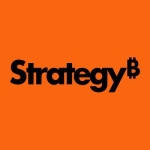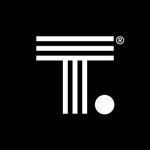What is our primary use case?
Amazon QuickSight is a business intelligence tool that gives the user all kinds of reports, like real-time and historical reporting. It allows you to showcase various reports and analytics and even trigger some limited actions. It's primarily designed for advisors or analysts.
I've used it extensively for Amazon Connect reporting. There are many tools that can integrate with Amazon Connect for reporting, but since Amazon Connect lacks native customization features, one way to customize reporting is to use QuickSight.
Compared to other reporting tools, it is very effective but does require an understanding of certain concepts in QuickSight. This understanding is crucial for creating dimensions, changing metrics, and visualizing reports. If someone has a thorough knowledge of QuickSight, it is a very good tool that allows for significant customization.
Recently, with AI integrations coming into play, QuickSight has gained a lot of new features, particularly in its integration with Amazon services and the ability to write queries using simple English. This is a fantastic feature that has helped me create and deploy reports more quickly.
What needs improvement?
One area is that integrating data from different sources into QuickSight can be a bit tricky, especially with Amazon Connect. To get data flowing, you need to use two additional services and configure them correctly.
The setup isn't straightforward and can be time-consuming.
Secondly, while QuickSight is a BI tool, it lacks features to suggest actions or integrate with other systems to turn it into more than just a data display tool.
Additionally, from a user perspective, QuickSight is easy to use if you have analytics experience. For beginners, it takes more time to understand the mechanics, visualizations, and overall functionality.
Lastly, integration with Amazon Connect can be unstable. Changes on the Amazon Connect side can impact datasets in QuickSight, causing reporting failures. These are some of the drawbacks that needs improvement.
For how long have I used the solution?
I have been using it for three years.
What do I think about the scalability of the solution?
In previous deployments, Amazon Connect was used by all the supervisors and some of the C-suite executives who were actually using Connect. All those supervisors, C-suite people, and even team leaders in the contact centers used QuickSight for their day-to-day operations.
They relied on it to understand their dashboards, check wallboards, and monitor how graphs showcase the different performances of the agents and even the voicebots at times.
In a call center with around 300 total, I have seen 20 to 25+ QuickSight users, which includes C-suite people as well, like the head of the call center and the head of business operations.
What's my experience with pricing, setup cost, and licensing?
It's affordable compared to other long-term contractor business tools available in the market. There are cost advantages with QuickSight, but it needs to be configured properly to realize these savings and get the most out of the platform at a lesser cost.
What other advice do I have?
For first-time users, it's crucial to understand the use case first. Why do we need to use QuickSight? It's like a Lego block, capable of constructing a lot. So, determine whether QuickSight is really necessary for your use case.
If QuickSight is chosen, take advantage of Amazon's documentation to learn about its strengths and capabilities. Understand the different dimensions, metrics, visualizations it supports, and the various fields and objects. Learn how it integrates with data sources. Knowing these aspects well will help you launch your projects faster and more easily.
Based on my personal experience with the usage and UI, I would rate it around a five out of ten. There are many developments that could still be made in QuickSight, especially in the way it integrates.
Which deployment model are you using for this solution?
Public Cloud
If public cloud, private cloud, or hybrid cloud, which cloud provider do you use?
Amazon Web Services (AWS)
Disclosure: My company has a business relationship with this vendor other than being a customer.



















